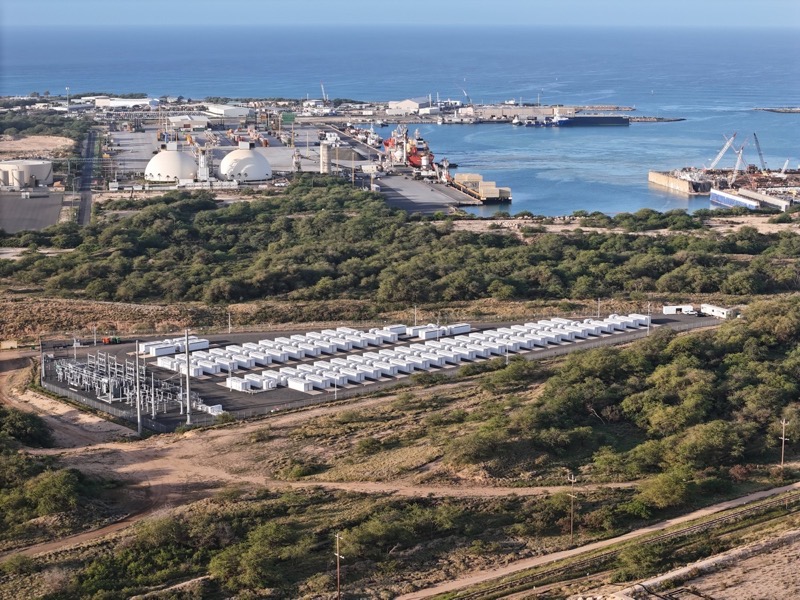
Tesla Megapacks Just Replaced a Coal Plant in Hawaii

Plus Power has initiated operations at its Kapolei Energy Storage facility on Oahu, Hawaii, touted as the world’s most advanced grid-scale battery energy storage system. This significant development is part of Hawaii’s transition from coal and oil-based power to renewable energy sources like solar and wind.
“This is a landmark milestone in the transition to clean energy. It’s the first time a battery has been used by a major utility to balance the grid: providing fast frequency response, synthetic inertia, and black start. This project is a postcard from the future — batteries will soon be providing these services, at scale, on the mainland,” said Brandon Keefe, Plus Power’s Executive Chairman, in a statement.
Spanning 8 acres near Honolulu, the KES battery project features 158 Tesla Megapack 2 XL lithium-ion iron phosphate batteries, each roughly the size of a shipping container. The facility offers 185 megawatts of power capacity and 565 megawatt-hours of electricity. It serves as an electrical “shock absorber,” a role traditionally played by combustion-powered plants.
“KES is an essential part of resources that provide reliability and energy security on Oahu’s isolated island grid,” said Jim Alberts, Senior Vice President and Chief Operations Officer of Hawaiian Electric.
“This is the first time a standalone battery site has provided grid-forming services at this scale – this is a critical application for high renewable penetration grids supplied by 185 MW of Megapack inverters,” said Mike Snyder, Senior Director at Tesla Megapack.
The 185MW/565MWh Kapolei Energy Storage site includes 158 Tesla Megapacks and is now fully operational⚡️
Owned and operated by Plus Power, the system will provide load shifting and fast-frequency response services to @HwnElectric, improving grid reliability with higher amounts… pic.twitter.com/7rMP484FQK
— Tesla Megapack (@Tesla_Megapack) January 11, 2024
Hawaiian Electric has found that the KES battery plant will substantially reduce the curtailment of renewable energy and allow the integration of 10% more new utility-scale renewables. It is also projected to save customers money, with an estimated reduction in electric bills of $0.28 per month over a 20-year contract.
The battery plant’s unique features include a 135 MW/540 MWH capacity, additional ‘fast frequency response’ of 50 MW/25 MWH, ‘virtual inertia’ for power-smoothing, and ‘black start’ capabilities for grid recovery in blackouts. It is strategically interconnected near three of Hawaiian Electric’s critical power generation facilities.
Keefe added, “No one has used batteries to provide such a diverse range of grid-forming services at this scale before in the world.”
The KES batteries are set to replace the grid capacity formerly provided by a nearby AES coal power plant, which was a significant electricity source on Oahu. Plus Power, a leader in standalone energy storage, has announced a portfolio of large-scale battery systems across various states and Canada, emphasizing their commitment to solving climate problems.
“This project provides another example of Hawai’i’s leadership in the clean energy transition. The grid modernization strategies employed by Plus Power support a cleaner, more reliable, and more affordable energy system,” said Mark B. Glick, Hawai’i’s Chief Energy Officer.
By June 2024, Plus Power aims to operate a total of seven large-scale battery energy storage plants across Arizona and Texas, totaling 1325 MW/3500 MWh.

